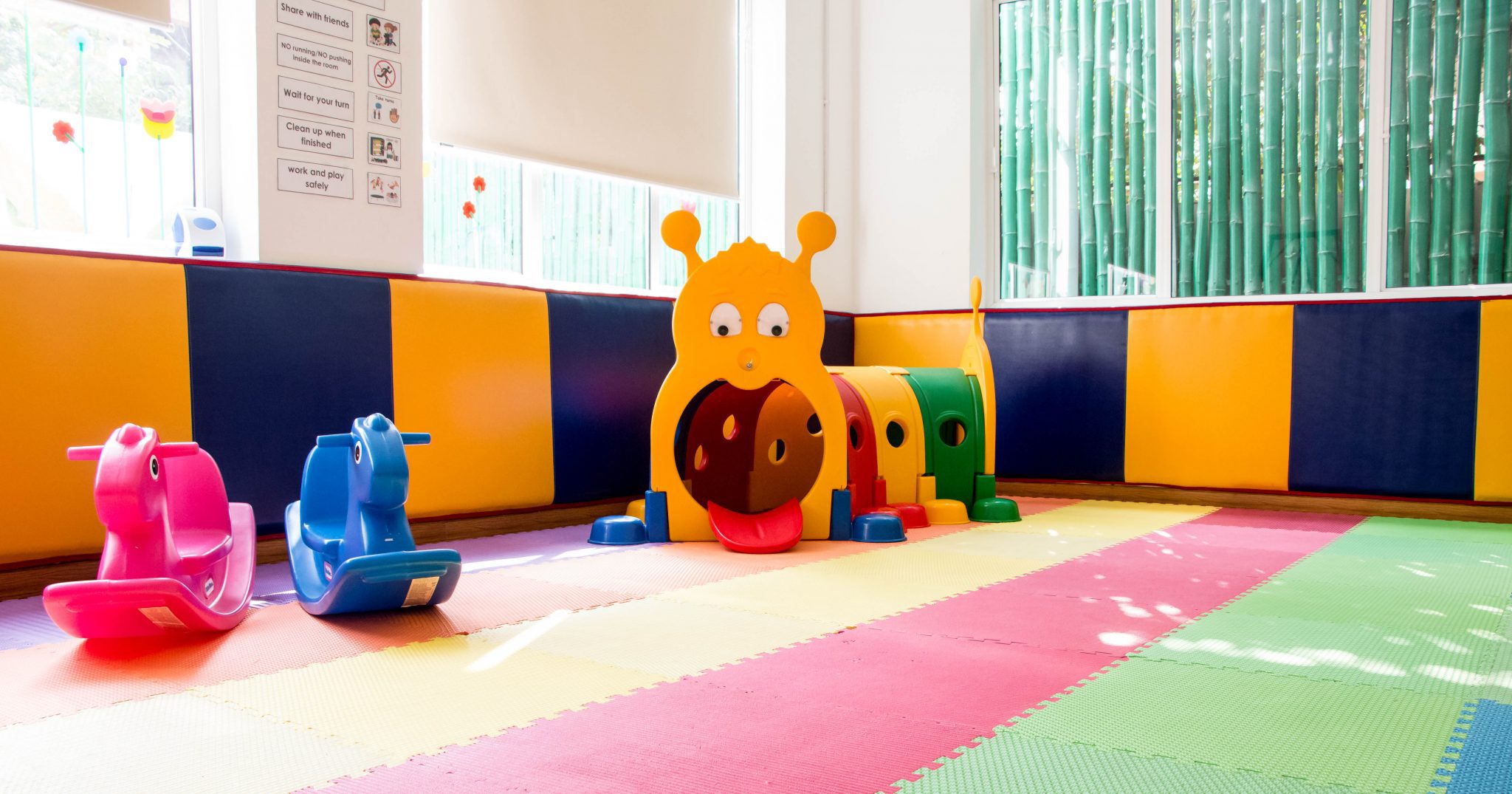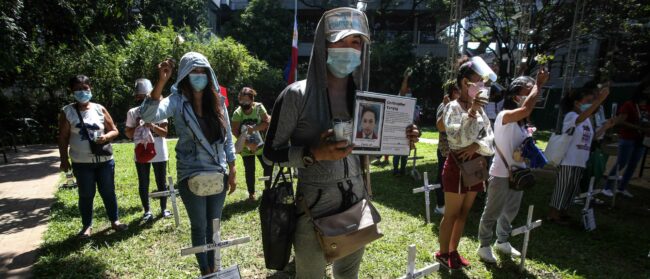From the outside, it looks like any other international school: a designated drop off zone yielding to an entrance decked in posters in primary colours boldly stating “determination”, “potential”, “success” among its learning aspirations. But the Centre for Adaptive and Responsive Education (CARE) is a school with a difference: it’s Cambodia’s first private centre supporting children with Special Educational Needs (SEN).
“When we opened, the response was overwhelming,” Joanne Imbagduran, principal for CARE recalls.“There were a lot of schools reaching out to us, and teachers too, but most of all parents happy to find some help.”
The centre, which opened its doors in September 2018, was the brainchild of Imbagduran, a SEN educator who arrived in Cambodia from the Philippines in 2009. “Back then, I was working as a normal classroom teacher,” she told Southeast Asia Globe. “In my free time I would do one-to-one support sessions with students with additional needs.”
In 2016, she took on a new role as SEN Coordinator with Footprints International School (FIS) which operates a network of schools, including CARE. Imbagduran came to notice that the regular classroom setting was not serving the interests of all students. “We identified a lot of struggles – a lot of our students were not really able to access our curriculum, they were just present in the classroom.”
These children were recognised as having special educational needs, meaning they had a difficulty or disability which made learning harder for them than for other children their age.
In order to reach the milestones in development for their age group, children with SEN often require additional support. It is here, Imbagduran said, where centres like CARE come in. “Here we offer a more intensive programme to students,” she said. “Not to keep them here but to support them so that they can be more participative in [regular classroom settings] in future. We just need to help them do what they cannot do for now.”
While this first centre dedicated to learning for children with SEN is a step forward, it will service just a fraction of the children who continue to be shut out of Cambodia’s education system.
“It is likely that at present, supply of special education services does not meet demand,” said Rudina Vojvoda, chief of communication for UNICEF Cambodia. “Meaning that many children with special needs do not attend school in Cambodia.”
An unspoken problem
According to estimates from UNICEF, one in every ten children worldwide has some form of disability. While the proportion of people with physical disabilities in Cambodia may be higher due to the country’s history of conflict, a 2010 nationwide survey conducted by the Ministry of Education, Youth and Sport (MoEYS) found that over 10% of children aged between two and nine years old had an impairment in cognition, hearing or speech alone.
Such children are often ‘invisible’ in Cambodia, according to UNICEF, meaning that they are absent both from social support services and official statistics . MoEYS data states that 40% of all three to five-year-old children in Cambodia attended preschool between 2016 and 2017. No children with disabilities were documented in these figures.
“Even where these children are identified, they face multiple barriers to education –parents frequently believe their children cannot be educated or participate in social activities if they have a disability,” said Vojvoda, citing a 2015 German international cooperation report. Stigma and discrimination associated with disabilities – including the widespread belief that those born with disabilities are receiving karmic justice for sins committed in past lives – also exacerbates this exclusion.
This can lead to children with SEN being isolated from their peers or abandoned by families, said Phnom Penh-based speech therapist Alejandra Martínez Zavala.
“Normally these kinds of kids are brought to orphanages.”
Families who want to treat their children go abroad to Thailand or Singapore for diagnosis from specialists, according to Imbagduran, a course she thinks is necessary – though it can be prohibitively expensive for some. Martínez Zavala agrees, saying that regular doctors within Cambodia may tell parents: “They have 30% autism – take this pill, they will get better.”
Such misconceptions about the nature of SEN abound even for those who have access to diagnostic services. “Family members often believe that they can also cure their child’s condition with medication,” said Dr Manabu Okawada, a pediatric doctor at Phnom Penh’s Sunrise Japanese Hospital who uses blood tests, CT and MRI scans to assess children’s development. “But it’s not like that. With many patients this is the first step – treatment is often required for the rest of their life.”
Dr Okawada said that these tests are ideally performed when the child is between one and a half and three years old. Where formal diagnosis is not possible, CARE offers some accommodations in the classroom. This inclusion approach to SEN, whereby learning takes place in regular classrooms, adapted to the needs and ability of individual students, is one backed by UNESCO in its push to achieve universal inclusive and equitable quality education and lifelong learning by 2030.
Dr Okawada told Southeast Asia Globe that classroom participation can be crucial for a child’s development. “I always ask parents, ‘Do they go to school or not?’” he said. “Families who can often hire a private tutor so the kid just stays at home, separated from the rest of society. All children need to go outside and play with kids the same age for stimulation and socialisation.”
Although some families are quick to turn to technology for a solution, simply slipping children an iPad can hinder or even hide the need for intervention, especially for children who are non-verbal. “Families will say ‘,” Martínez Zavala said. This is especially true for children with autism who lack the communication skills to express their basic needs. “They can talk, but only ABC – they do not tell you that they are thirsty, they just sit there.”

While there is no official data on how many children with SEN in Cambodia attend school or how many Cambodians have disabilities, specialists such as Dr Okawada note a prevalence of children they treat with ADHD, while still more have autism. “In one year, I have treated perhaps 70 individuals, of which 10 to 15 were severe.” He paused for thought. “It’s a lot, more than Japan I believe,” he said.
Martínez Zavala has observed the same trend in children with SEN in Cambodia. “There is a big autism boom here,” she said. “Sure, there are kids with Down’s syndrome or cerebral palsy, but 80-90% have autism – it’s the same at FIS and other schools around Phnom Penh.” She proposed one explanation for the apparent prevalence: symptoms of autism can be more obvious than those of other impairments, which may be overlooked.
Other interventions
Over the course of her decade as a SEN teacher in the Kingdom, Imbagduran has witnessed a change in attitudes towards children with SEN for the better. “When I started in 2009, many parents would not accept that their child had special educational needs,” she said. “But now more and more parents are accepting it.”
While this kind of social change is essential, it isn’t enough. Dr Okawada argued that the government had a greater role to play in improving the lot of children with SEN. “It was the same in Japan before [children gained more social acceptance] – only NGOs supported them, before the government understood and got on board,” he said.
In Dr Okawada’s view, such support is essential and the time is ripe for Cambodia to make such a change. “The government is getting better, the economy is stronger – it’s easier for people to access services,” he said.
Some progress has been made to address lack of access to education for children with disabilities. A special education department has been formed within the MoEYS, complemented by the newly established National Institute for Special Education (NISE) which Vojvoda said will help institutionalise special education and ensure a nationally qualified teaching force for children with special educational needs.
NISE can call upon tools like the recently launched teacher training manual developed with Save the Children, which contains techniques for teaching children with intellectual and learning disabilities in addition to autism – the first of its kind in Cambodia.
Such tools are encouraging because they help prepare the ground for inclusion, said Martínez Zavala, who cautioned that in countries that don’t take such steps, inclusion education does not work. “Instead, the children go to normal school, but the teachers don’t know how to handle them, so they sit there playing, but not learning anything,” she said.
The manual has been trialled with over 10,000 children across 25 targeted preschools in Phnom Penh,which identified over 70 children with a disability, and is rolling out nationwide. “The development of a teaching force specially qualified in special needs education is essential to overcome cultural norms to ensure children with special education needs can indeed participate in learning,” Vojvoda said
So far, the results are promising, showing how deprived children can be reached and welcomed to school where adapting to their individual learning needs enables them to develop to their full potential.
For Imbagduran, opening FIS CARE is a dream come true. And although she recognises that for some students it may not be possible to learn within regular schools and classrooms, she told Southeast Asia Globe that they continued to strive for an inclusion-based approach to education that gave special needs students the support they needed to thrive.
“Nothing is impossible with the right support,” she said.


